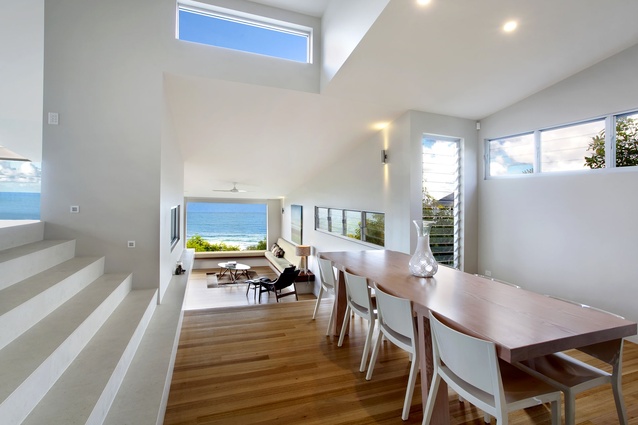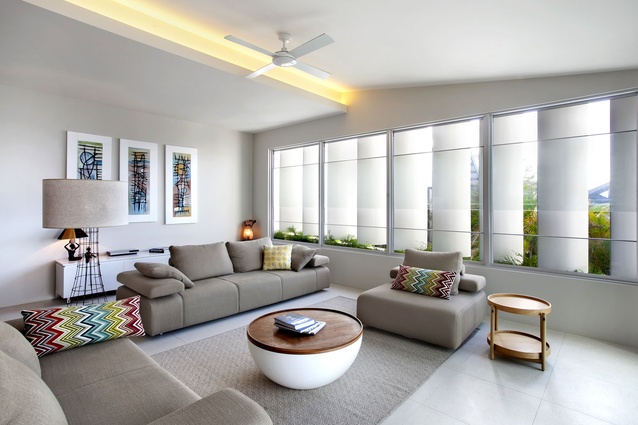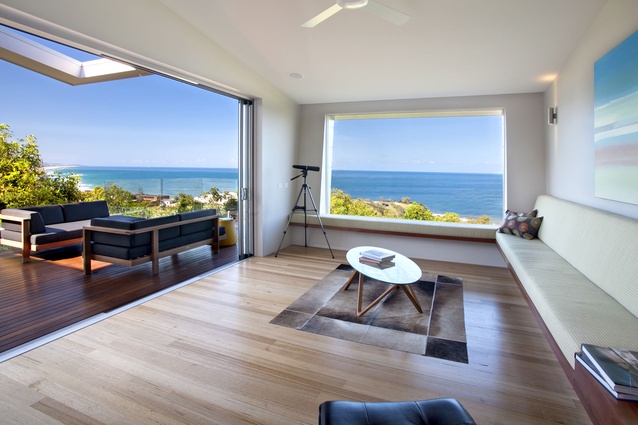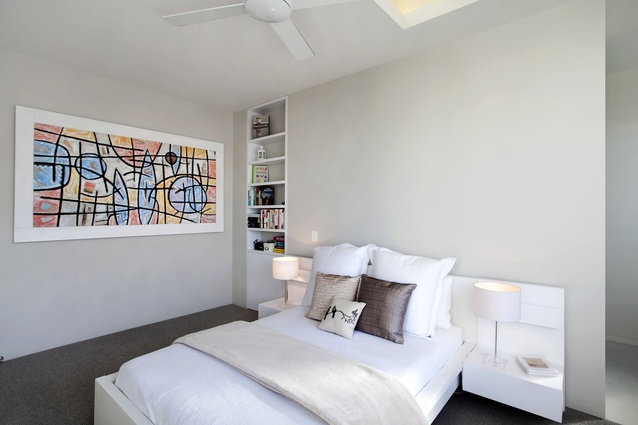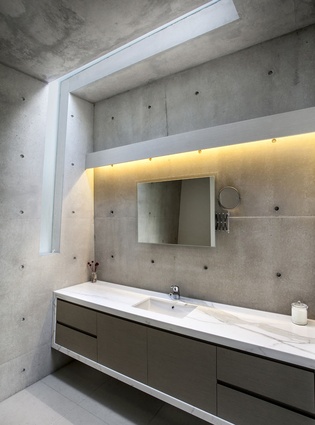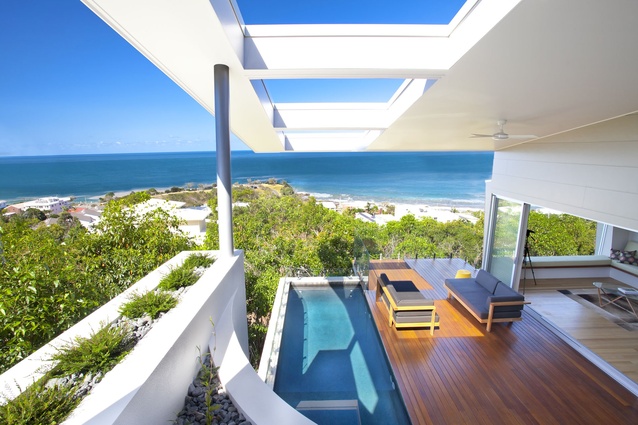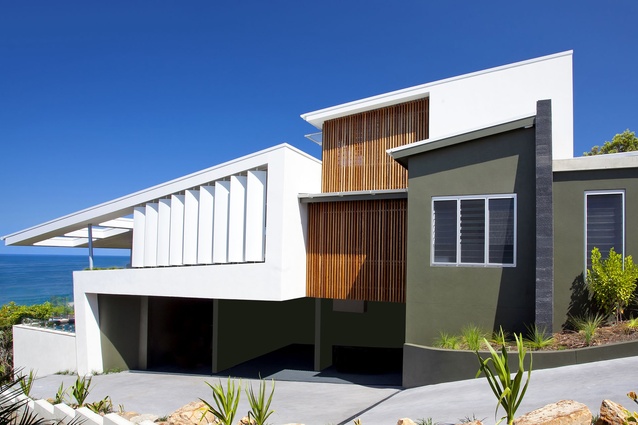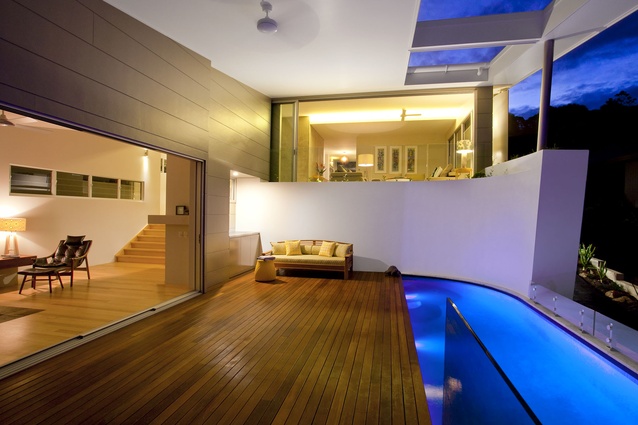The sea inside
Flanked by gabion walls and immaculate lawns, the steps leading to Ian and Susan Callaghan’s front door take visitors from the relaxed, beachy street towards a dramatic array of disparate concrete forms and a timber box perched above. The house is nothing like the neighbouring Queensland homes. Instead, it’s part bunker and part modernist structure: a contemporary piece of design made from unfinished concrete, stone and wire and rough-sawn timber.
Set above the Sunshine Coast’s Coolum Beach, the house was 25 years in the making. The Callaghans first spotted the site where it now sits a quarter of a century ago but it wasn’t for sale, so they purchased the section next door and built a home for their young family. Ten years later, when the land, which is two minutes’ walk from the beach, went on the market, the Callaghans bought it and waited another decade to do something with it. Planning and design took a few more years; construction took 15 months.
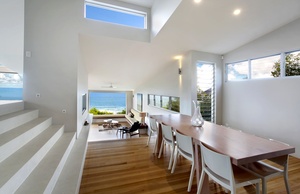
“The clients wanted to create a refined, clean-lined, modern but informal home with dramatic street presence that took optimum advantage of the site’s potential for outstanding views,” says Scott Falconer, the designer hired to create the 490m² house. Falconer (a New Zealander) and Lee Foster, his partner in Aboda Design Group, started by erecting scaffolding on the heavily treed, steep site to ascertain what could be achieved at different elevations.
“Our brief to Scott was to utilise the view,” explains Ian Callaghan. “We wanted to use lots of raw products, including timber and concrete, and wanted lots of natural light. The idea was to have modern, clean lines that were simplistic but edgy.”
“The difficult site constraints formed the basis for the drama of the design,” adds Falconer. “We were chasing views, gradients and head heights. So it was split as a series of cascading half levels – seven in total. The clients wanted open-plan living with different spaces but not defined by walls, so we achieved that with the different levels.”
The finished house is a collection of interconnected concrete boxes that Falconer describes as “unashamedly masculine” and that, in August 2013, won the Building Designers Association Queensland award for the best house over 450m² and the Premier Award for the best all-round design. Inside the boxes, clean lines abound and the impressive sea views can be seen from almost every room – even from the front door.
The main living area (there are several living areas, connected by flights of steps) drops down half a storey to the pool area, which features glass sliding doors and frameless pool fencing. A series of square openings in the overhang above the pool creates a dappled skylight effect. Planter boxes above the pool area are filled with local species and stones to connect the property with the surrounding natural environment.
On the north-western side of the house, the windows of another living space are shaded by large, movable fins.
“They’re there to shield the neighbour,” explains Falconer. “Depending on the direction of the blade, you can’t see the neighbours, they can’t see you, and they also control the light and ventilation in the room.”
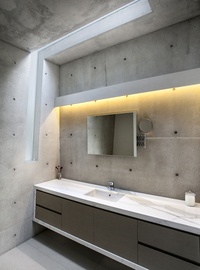
Above the central living area, the kitchen features a scullery and custom-designed furniture. The lowest floor comprises a bedroom, a bathroom and a living area, which the couple’s eldest daughter inhabits when she visits. Two additional, bunker-style bedrooms are housed on the middle level, where teenagers Ann and John reside. The highest part of the dwelling houses the master bedroom and bathroom.
On the coastal side of the house, the building cantilevers out towards the ocean. “That was determined by the minimum distance eastwards, down the site, to obtain unobstructed northern views to Noosa Heads and around to the south-east with views of the Coolum Bays,” says Falconer. “The suspended concrete construction enabled large-span floor plates, cantilevered floors and the use of raking and upturned beams.”
The strategic use of concrete walls and slabs for construction increases the home’s thermal mass, keeping it cool in summer and retaining heat in the winter. In the master bedroom, multi-stacking doors, louvres and awnings achieve cross-flow ventilation negating the need for air conditioning for most of the year. The cedar batten screens and large overhangs in the rest of the house control solar heat gain while maintaining views and ventilation. Rainwater is harvested from the rooftops and stored in a tank housed below the pool. The garage is cleverly concealed behind the tank and offers a private entry into the heart of the home a half-flight of stairs below the kitchen.
“It exceeded the brief. It is far more than we expected,” Callaghan says of the house. “We are overwhelmed with the design and the ease with which we can move around the different levels. The house continues to amaze us.”


